Cheese has a hefty environmental footprint. Now, researchers are investigating ways to innovate one of our favorite foods—with help from some unlikely suspects.
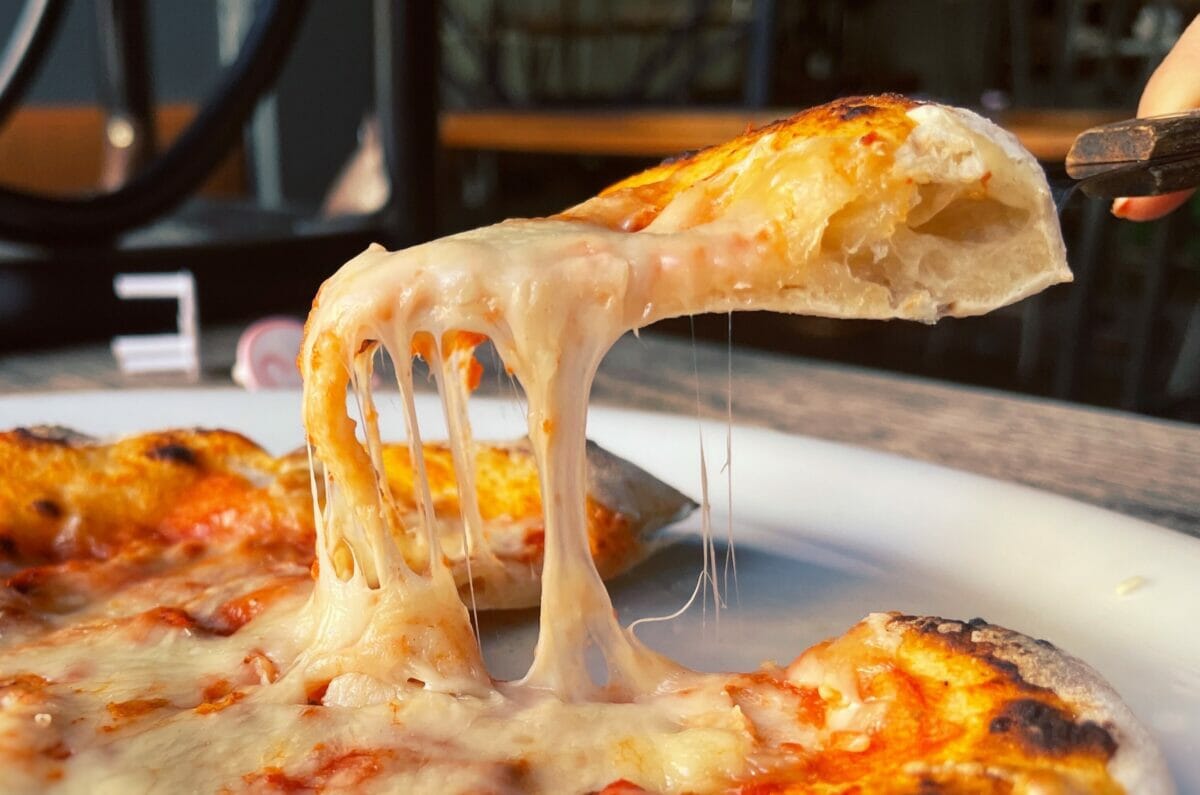
What makes a good mozzarella?
It has to be flavorful. It should become gooey and stringy when melted. It needs to perfectly balance an acidic tomato sauce.
But does it have to be made from animal dairy?
The cheese innovators over at New Culture would say no. Their first product, a mozzarella cheese created with casein protein made through precision fermentation—that is to say, not from a cow—is launching in Nancy Silverton’s Pizzeria Mozza in Los Angeles in 2024. Silverton and Pizzeria Mozza have received numerous accolades over the years, including the 2014 James Beard Foundation Award for Outstanding Chef.
Precision fermentation is the process of engineering microbes to make something specific during fermentation. Inja Radman, co-founder and Chief Scientific Officer of New Culture, says its microbes are experts at making casein, a protein found in mammalian milk that’s full of nutrients for animal offspring. It also happens to be the protein that gives cheese, well, its cheesiness. The melt, chew, crumble and ooze of cheese are all thanks to casein.
“Everything we know and love about cheese really comes from casein,” says Radman. By making milk protein without milk, Radman and the others at New Culture are making “cow cheese without the cow.”
New Culture is part of a wave of scientists and innovators asking how the future of cheese will look. Some, like New Culture, aim to reduce or eliminate the dairy component altogether, while others seek to improve the dairy cheese process overall using unexpected allies.
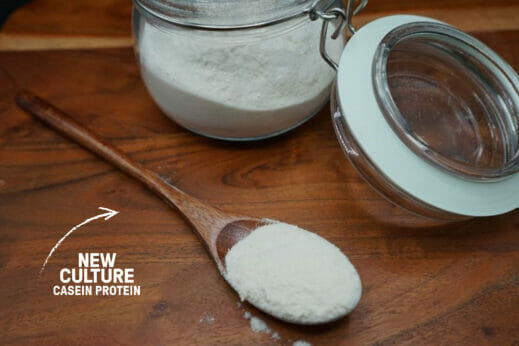
Microbe-made casein protein. (Image courtesy of New Culture)
Sea cheese
One day, you might be able to buy cheese made with help from an unlikely source: seaweed.
A critical first step in making cheese is coagulating milk. In traditional cheese-making, this happens thanks to rennet, an enzyme derived from calf stomachs. But there’s not enough rennet to meet the global demand for cheese, so most cheeses in US commercial markets are made using alternatives. These alternatives have their own shortcomings, says Jian Zhao, associate professor in the School of Chemical Engineering at the University of New South Wales and one of the researchers looking for rennet alternatives. For example, the taste doesn’t quite hold up to traditional cheese.
“There is a continued need for the industry to explore new alternatives,” says Zhao.
In a recent research project, Zhao and his team turned to the ocean to look for an enzyme that could interact with milk similarly to rennet—coagulating it within an efficient timeline. They weren’t the first to consider the ocean as a potential provenance for this enzyme, but they took the research furthest, isolating a particular species of seaweed called Gracilaria edulis and actually using it to make cheese.
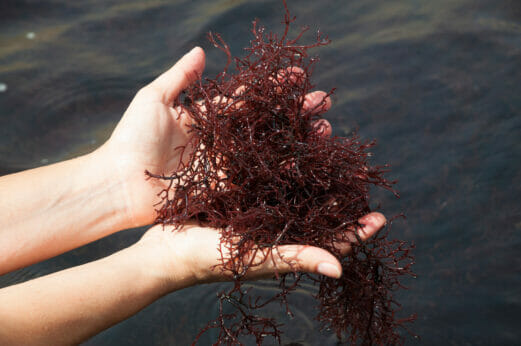
Gracilaria. (Photo: pokku/Shutterstock)
Of the seven seaweed species they tested, G. edulis was the only one to quickly coagulate cheese. The researchers used it to make two cheeses, an aged cheese similar to cheddar and a fresh one more like ricotta, and they were given to a taste-testing panel.
The cheddar was too bitter, says Zhao. But the ricotta? “The quality is quite good,” he says.
You won’t see seaweed ricotta in stores just yet. More research needs to be done to show that seaweed enzyme cheese can produce a product on par with other cheeses. Then, says Zhao, they’d need adventurous cheesemakers to start trying it out.
When it comes to making “sea cheese,” as Zhao calls it, it’s more than likely there are other enzymes in the ocean waiting to be identified.
“I’m pretty confident there are more species which will have the ability to coagulate milk,” says Zhao. “And they potentially can do a better job than Gracilaria.”
Hybrid cheeses split the difference
Clara Talens, senior researcher at AZTI, a Spanish research center that focuses in part on food innovation, sees a future for hybrid cheese.
Hybrid cheese—a milk-based cheese supplemented with plant-based ingredients—can help ease the transition toward more plant-based products, says Talens. The presence of milk makes the cheese’s taste and texture familiar to consumers, but the environmental impact is lower because it uses less dairy. Cheese has a hefty environmental footprint, due to the land use and greenhouse gas emissions associated with dairy farming.
“If we keep feeding our world with animal-derived proteins at the pace we are now, it’s not possible to feed us all,” says Talens. That doesn’t mean eating animal protein is inherently bad, she says, just that the rate is unsustainable.
Added proteins can come from sources such as insects or pulses such as chickpeas. In a recent study, Talens and her team used insect flour made of mealworm larvae and flour made of faba beans (also sometimes called fava or broad beans). These ingredients were chosen because they are high in protein but are not as resource-intensive to cultivate.
“It’s a matter of the resources needed to produce a kilogram of protein,” says Talens.
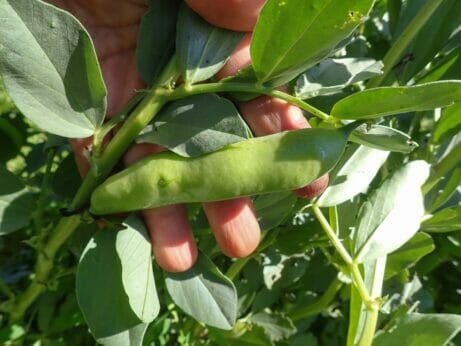
Faba beans. (Photography by @boulham/Shutterstock.)
Talens analyzed different ratios of milk protein to faba bean protein to insect protein. The researchers looked to both dairy cheese and plant-based cheese as reference points, analyzing the resulting mixtures for their nutritional value, taste and texture.
The researchers found that the texture of the faba bean was good, especially when combined with the milk protein. The insect protein did not contribute well to structure, but it gave the cheese an umami-like taste similar to certain aged cheeses.
Another group of researchers from Denmark also looked at the potential for incorporating plant proteins to make hybrid cheeses, and concluded that this area shows great potential—once cheeses are developed that offer satisfactory taste and texture. And in the US in 2021, cheese company The Laughing Cow tried out the concept by releasing hybrid spreadable cheeses that included lentils, red beans and chickpeas.
Still, says Talens, instead of striving to create direct imitations of traditional cheese, maybe another mindset shift is in order.
“We should open our minds and accept all the flavors and other tastes that are produced by using other raw materials,” says Talens. “But still, that’s the most difficult part. With the hybrids, maybe we are a bit closer to acceptance.”
Cheese for everyone
Once the microbes at New Culture make casein, it’s combined with plant-based fats and other ingredients and made into cheese using a similar process to standard cheesemaking, thanks to the fact that the microbially made casein performs the same as casein from cow milk.
“It’s identical to casein we would get from milk,” says Radman. There just wasn’t an animal involved.
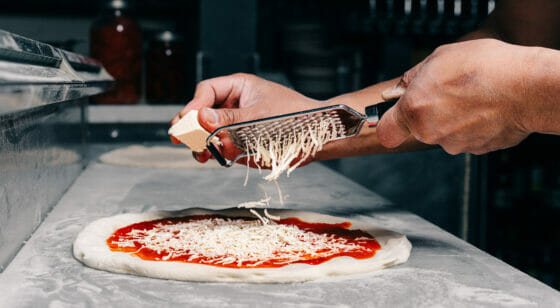
New Culture mozzarella. (Image courtesy of New Culture)
Radman says there was a reason they chose to make mozzarella as their first product. Pizza is everywhere in the US, and pizza is made with mozzarella. New Culture doesn’t just want to market to vegans.
“This is a cheese for everyone,” says Radman.
And since it’s a pizza cheese, she adds that it’s something that people can share without anyone in a group compromising on values or taste. “That means this is a cheese that brings people together.”
The photo of the fava bean is incorrect and is actually an English pea or snow pea. Fava beans are borne in an upright position and have completely different foliage.
Of course, insect flour made of mealworm larvae has been used for some time mixed in human food. However, especially when added to a cheese-type product, constipation can be a problem. We’ve also heard reports that human ingestion of mealworms infected with “Wing drop,” or “Droopy wing,” disease might cause muscular spasms or upper-arm weakness. It’s unclear whether the dehydration process of mealworms has any effect on the transmission of this disease.to humans.
Them’s not Faba beans. Them’s peas in the picture.
Hybrid cheese is interesting?. In the days to come, hope, it becomes reality and people can enjoy at much lower cost than the present days cow cheese.
They look like favas to me. I breed English peas, and have grown both species.